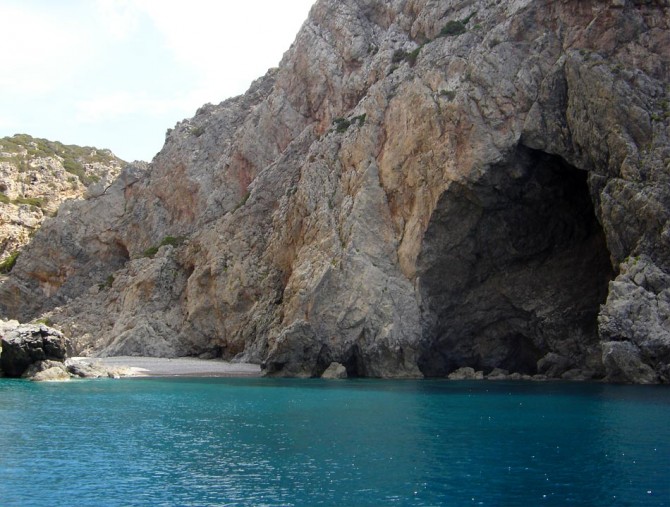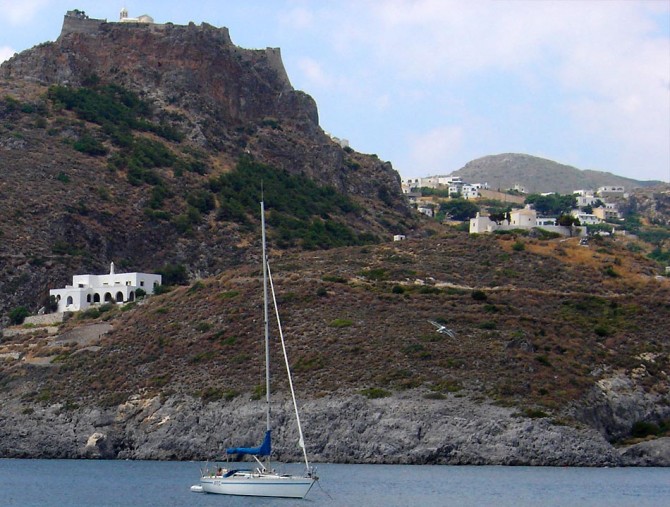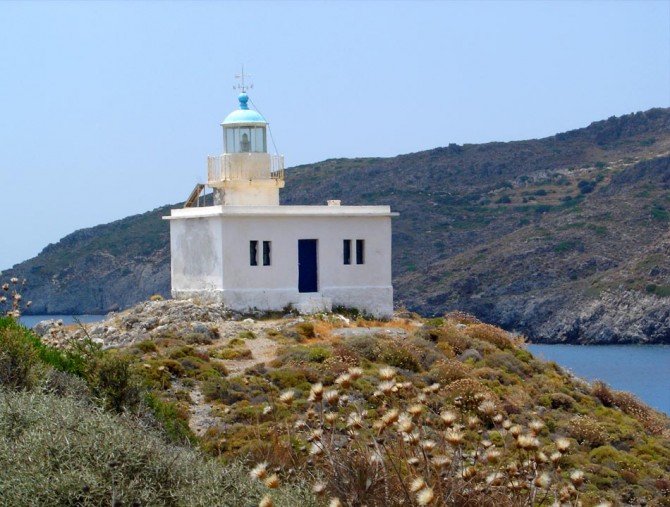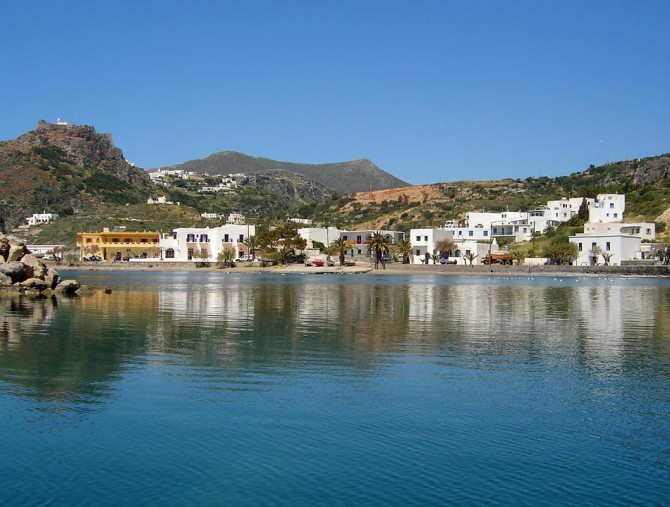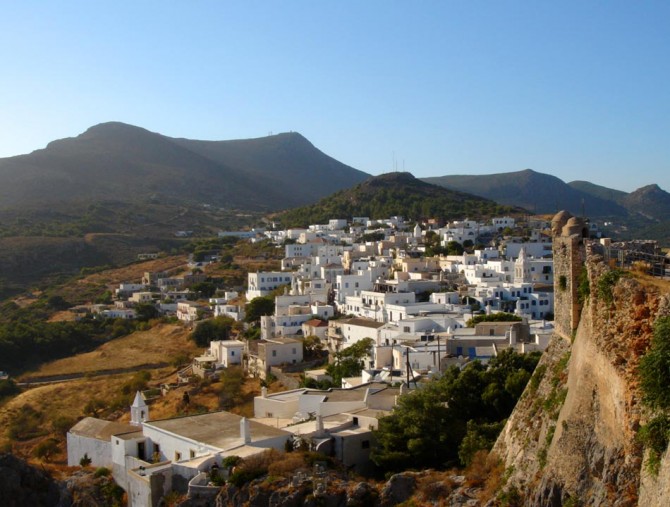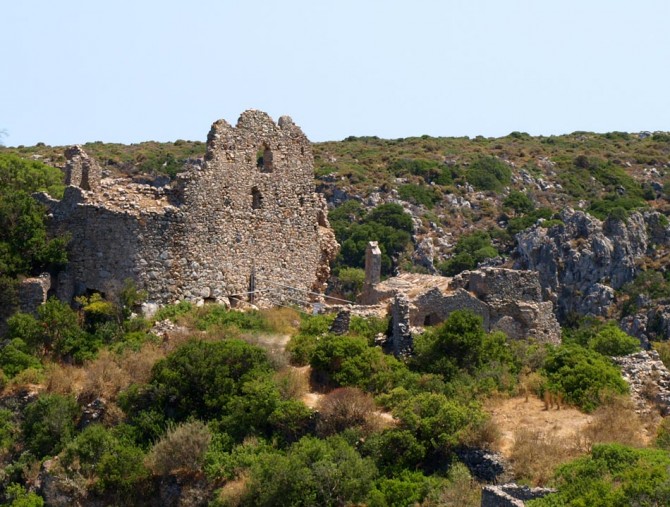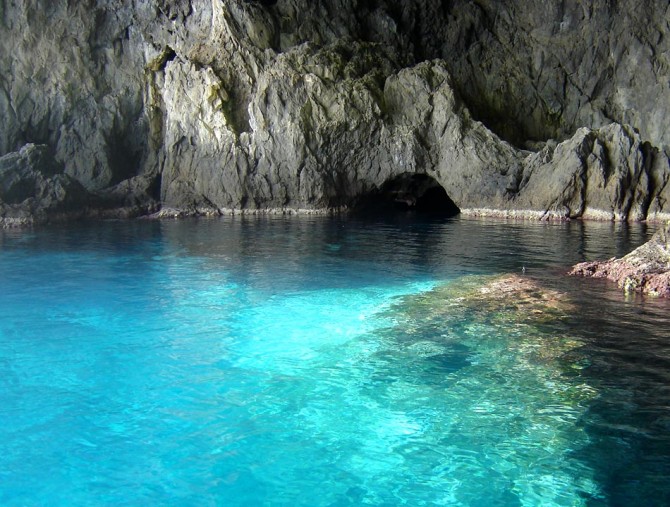Китера
По версии великого древнегреческого поэта Гесиода именно здесь, в море у Китеры, родилась богиня любви Афродита. Согласно легенде, Уран заставлял Гею рожать своих детей в воде, из-за чего она была зла на него и решила наказать. Она попросила своих детей убить его. Самым жестоким из них был Кронос, отрезавший отцу генеталии, которые упали в море у Китеры и стали двумя маленькими островами. Когда кровь коснулась морской пены - от соприкосновения и родилась Небесная Афродита
История острова, согласно найденным в пещере Святой Софии артефактам, началась в 6 тысячелетии в эпоху неолита. В других районах острова также были отрыты археологические находки, датируемые 4 тысячелетием. В деревне Агиос Георгиос можно увидеть останки храма минойской эпохи (7000 год до н.э. - 1400 год до н.э.). В дальнейшем на острове господствовали финикийцы, спартанцы, афиняне, римляне, византийцы, а затем - венецианцы, турки, французы и даже британцы. Окончательную независимость Китера (вместе с другими островами Ионической группы) обрела лишь 28 мая 1864 года.
На Китере немало археологических памятников. У горы Палайокастро находится руины храма Афродиты, датируемые VI веком до н.э.. Там же у останков храма в 1200 году была построена византийская церковь Агион Анаргион. Считается, что Афродита появилась на свет в водах Палаополиса, где в древние времена располагался порт Скандия, главный порт древней Китеры. Он перестал существовать в 375 году н.э. в результате потопления, вызванного землетрясением. На этом месте сейчас находится пляж Палиополис, считающийся самым красивым на острове. Не менее значимым археологическим объектом острова считается пещера Хусти, расположенная неподалеку от современного порта Диакопти. Эта пещера была местом поклонения в древние времена, о чем свидетельствуют находки (3800 года до н.э.), сделанные во время археологических раскопок.
Также на Китере имеется немало памятников византийской эпохи. Одним из самых важных объектов считается замок Хора Китера, построенный в XIII веке. Внутри его мощных стен располагаются сразу несколько византийских храмов: Панагия Миртидиотиса, Панагия Орфани, а также старинное здание в котором находится исторический архив Китеры. Вне крепостных стен храмов еще больше - целых четырнадцать, также отсюда открывается захватывающий вид. Столица византийской Китеры находится на севере острова и называется Палеохоры (старое название - Агиос Димитриос). Он был построен в XIII веке монемвасийцами в диком каньоне. Главная сохранившаяся достопримечательность этого места - полуразрушенный замок.
Третий по важности замок Китеры называется Като Хора и находится в деревне Милопотамос. Он был построен венецианцами и, так же как и храмы внутри него, неплохо сохранился.
Что касается пляжей Китеры, то помимо Палеополиса весьма популярны организованные пляжи Халкос, Капсали, Компонада и Фири Аммос. Последний плавно переходит в пещеру - посетить это место однозначно стоит.
Китера считается не самым популярным туристическим направлением, поэтому отдыхают тут преимущественно семьи и просто влюбленные пары. Ночной жизни практически нет - зато есть тишина, покой, прекрасные пляжи и археологические памятники.
Как добраться до острова Китера:
- на пароме из порта Пирея, Неаполиса Биона или Гитиона
- на машине до Гитиона (256 км) по трассе А7
- на машине до Неаполиса Биона (325 км) по трассе А7
- на автобусе из Афин до Гитиона с автовокзала Кифисью. тел. автовокзала Гитиона: +30 27330 22 228
- на автобусе из Афин до Китеры каждую среду (прямой рейс Дракакис Экспресс), тел. +30 27360 31 160
- на самолете из Афин ежедневно авиакомпанией Olympic Air
Τекст: Александр Фролов
Kythira
Although it is far away from the rest six, Kythira is the seventh island that completes the complex of the Ionian islands. And naturally it has its own share in beauty, history and legends.
According to Hesiod, the great Ancient Greek poet whose most known work is the “Works and Days”, Aphrodite, the Goddess of Love, was born in the sea of Kythira. The legend has it that Gaia (the mother of the gods) was so angry with her husband, Uranus, because he had compelled her to keep their children in her bowels, that she decided to punish him. So she asked her children to kill their father. The most ruthless of them was Cronus, who took a scythe from his mother’s bowels and killed his father cutting his genitals, that fell in the sea of Kythira and became two islets (perhaps Dragonares). As the blood was tumbling, it touched the foam of the sea and through the union of these two elements the Celestial Aphrodite was born.
The history of Kythira began in the Neolithic period, after the end of the 6th millennium BC, when it was first inhabited, according to a base that was found in the cave of Agia Sofia in the village Kalamos. Archaeological findings dated in the 4th millennium BC were also discovered in other areas of the island. In the village of Agios Georgios, ruins of a Minoan temple have been found, making the archaeologists believe that Kythira used to be a Minoan colony (the Minoan culture, by the way, was the very powerful culture that was developed in Crete and lasted from 7,000 BC to 1,400 BC). After the decline of the Minoans,the Myceneans, the Phoenicians, the Spartans, the Athenians, the Romans, the Byzantines, the Venetians, the Russo-Turks, the French and the Brittish had also sequentially occupied the island in the passage of the centuries, leaving their traces, until the May 28, 1864, when the Ionian Islands (including Kythira) were annexed to the
liberated Greece.
The monuments of Kythira are quite many, as you can understand. In the mount Palaiokastro, for instance, there are the ruins of the temple of Aphrodite, dated in the 6th century BC. The columns of the ancient temple are spread in front of the church of Agion Anargiron, which was built in the top of the mountain in 1200 AD. Ancient Greeks and Christians at the same place, for one more time. In the sea of Palaiopolis it is said that Aphrodite was born. In that place there was also the ancient port of Skandia, which was the port of the ancient capital of Kythira. The port was sunk by an earthquake in 375 AD. Just for the record, the beach of Palaiopolis is the biggest and most famous of the island, so if you pay a visit to the place, you can combine culture, sea and sun. The tour in the ancient past of Kythira will also bring you to the main port, Diakopti, where there is a cavern beneath the earth’s surface, called Chousti. The archaeological excavations
brought to light significant findings dated in 3,800 BC and also findings from the Classical and the Roman times, indicating that this cave was a place of worship.
The Byzantine period of the island is being represented by the Castle of the Chora of Kythira, the best preserved castle of the island, built in the 13th century. Its powerfull walls enclose the churches of Panagia Myrtidiotissa, of Panagia Orfani, of Pantocrator and of Agios Ioannis, the Palace of Foreseeable, that today houses the Historical Archive of Kythira, the old Headquarters and noble residences. Outside the fortress there is a second castle wall that encloses the settlement of Kleisto Bourgo (also known as Bourgo Serato), with 14 churches and many houses. The castle has several cannons from the periods of the Venetians, the Russo-Turks and the English. Extra bonus, the breathtaking view you will enjoy from there.
At the north of Kythira, you will see Palaiochora, that was the capital of the Byzantine Kythira, built in the 13th century AD. Its name back then was Agios Dimitrios. The ruined castle, built by the Monemvasians, is one of the most important archaeological sites of the island, and it is built within a natural fortress into a wild deep canyon covered by huge rocks. It is needless to say that the wild beauty of the place will attract the nature lovers as well. If you love the risk, you can also descent the wild canyon and end up to the sea, living an amazing experience. After all, we live only once.
If you want to enjoy a magical sunset, then you should definitely visit the Kato Chora of the village Mylopotamos, where the third important castle of Kythira is waiting for you. It was built by the Venetians, and encloses houses and churches (many of them are well preserved). The entrance of the fortress is adorned by the coat of arms with the Lion of St. Mark, the emblem of the Serenissima, the Republic of Venice.
As for the beaches of Kythira, they are known as among the best in Mediterranean. Apart from Palaiopolis, that we have already mentioned, the popular and organized Chalkos, Kapsali, Komponada and Phiri Ammos (which has also a cave, ideal for exploration) are among the best choices, although the island is full of beautiful beaches that deserve a visit. All you need is a car or a motorcycle, because the island is rather big and full of beauties waiting to be discovered.
Kythira is an island with a low touristic profile, ideal for families and romantic couples (it is the island of the goddess of love after all). If you look for intense night life, better try another place. But if you want to enjoy beautiful beaches, great food, archaeological sites, lovely villages and warm hospitality, then this Ionian island is taylor-made for you.
How to get there: By ferry boat from Piraeus, from Gytheio and from Neapolis Boion. Athens-Gytheio by car (distance 256 km) via A7. Athens-Neapolis Boion by car (distance 325 km) via A7. By bus: From Athens to Gytheio or Neapolis and then by ferry boat to Kythira. Athens bus station (100 Kifissou Avenue, Athens), tel.: +30 210 51 24 913. Neapolis bus station, tel.: +30 27340 23 222. Gytheio bus station, tel.: +30 27330 22 228. From Athens to Kythira (every Friday) and from Kythira to Athens (every Wednesday), by the bus Drakakis Express. Info, tel.: +30 27360 31 160. By air: Daily flights to Kythira by Olympic Air.
Τext: Marilou Pantazi


